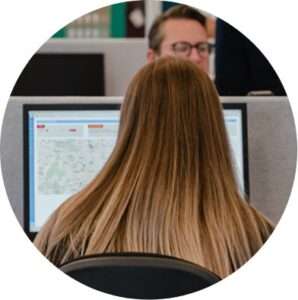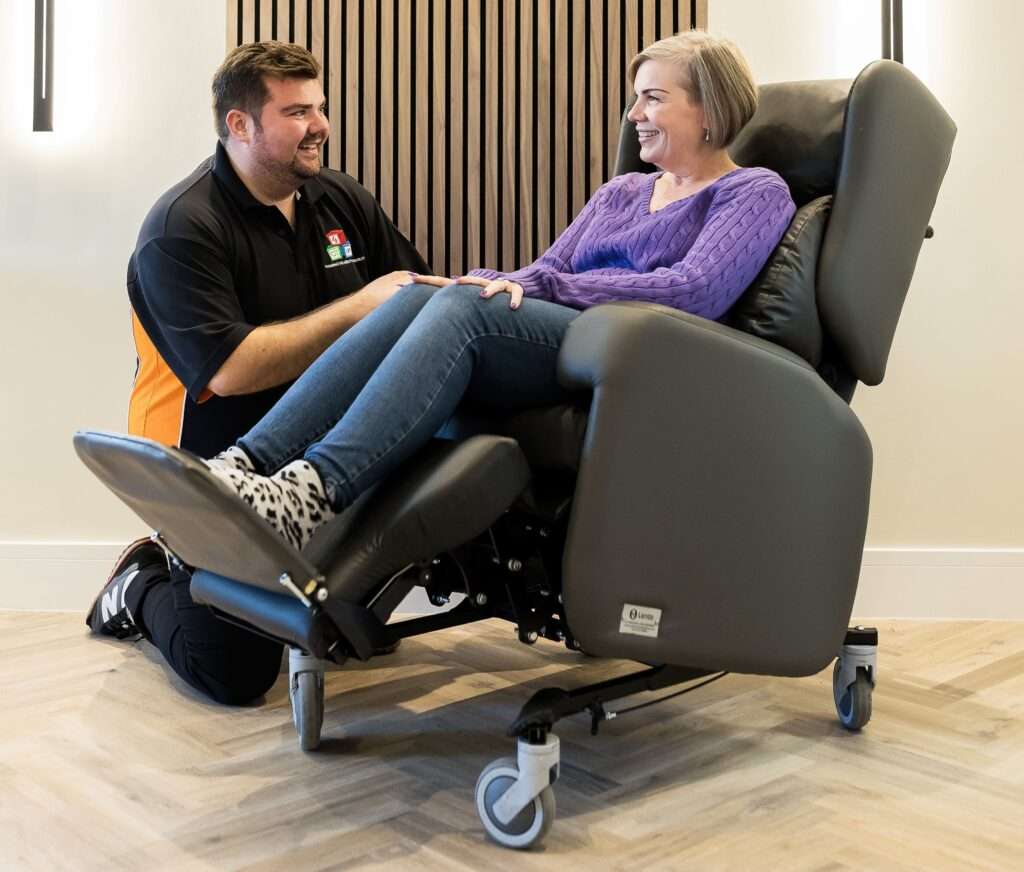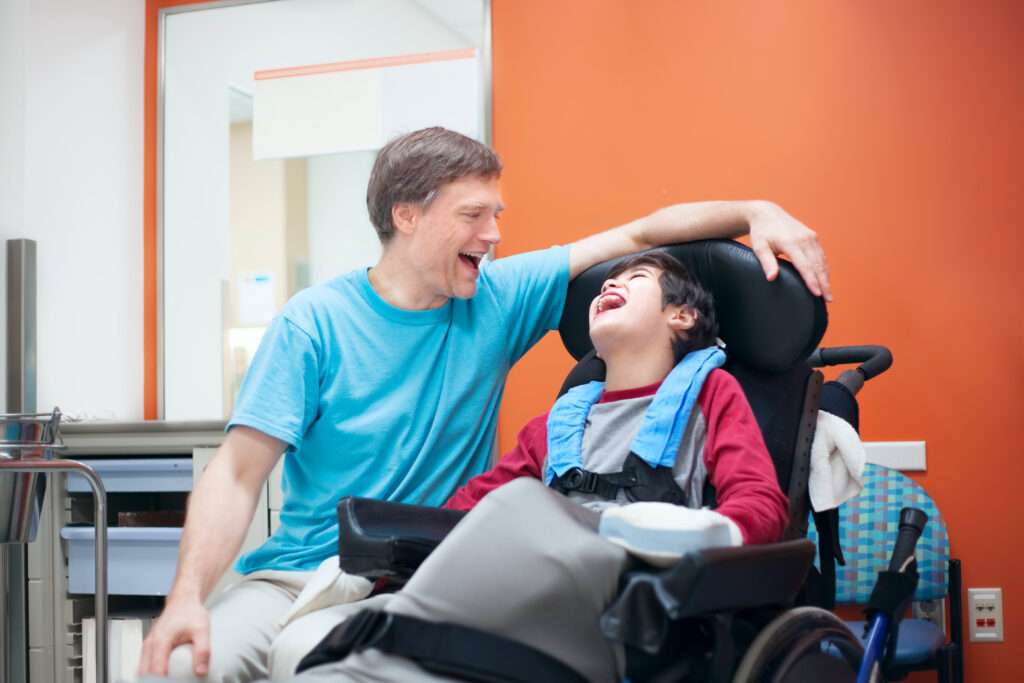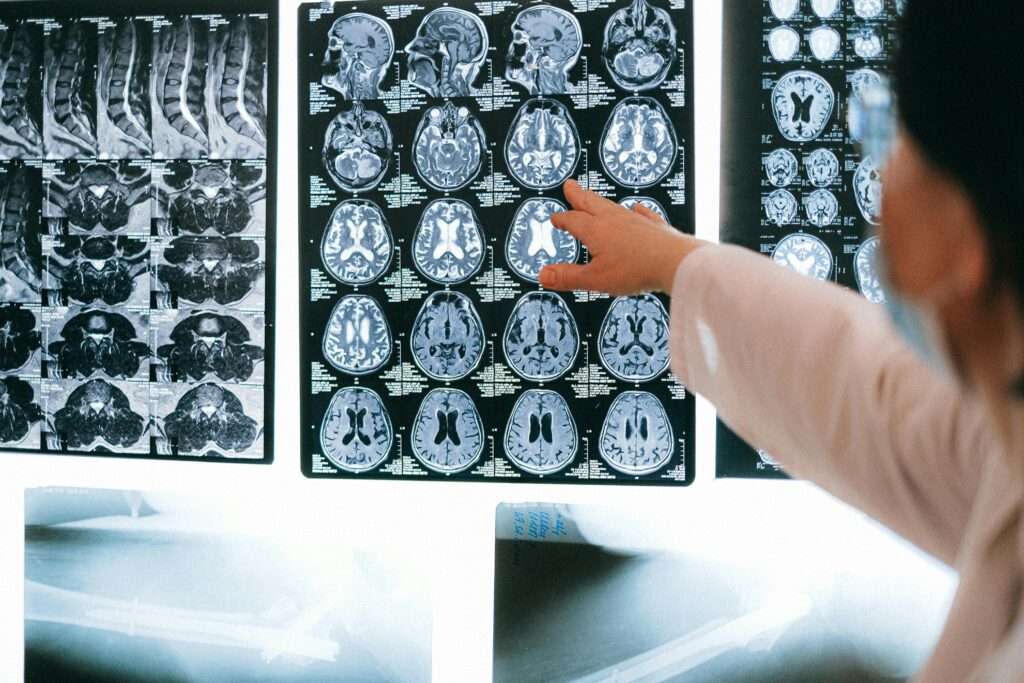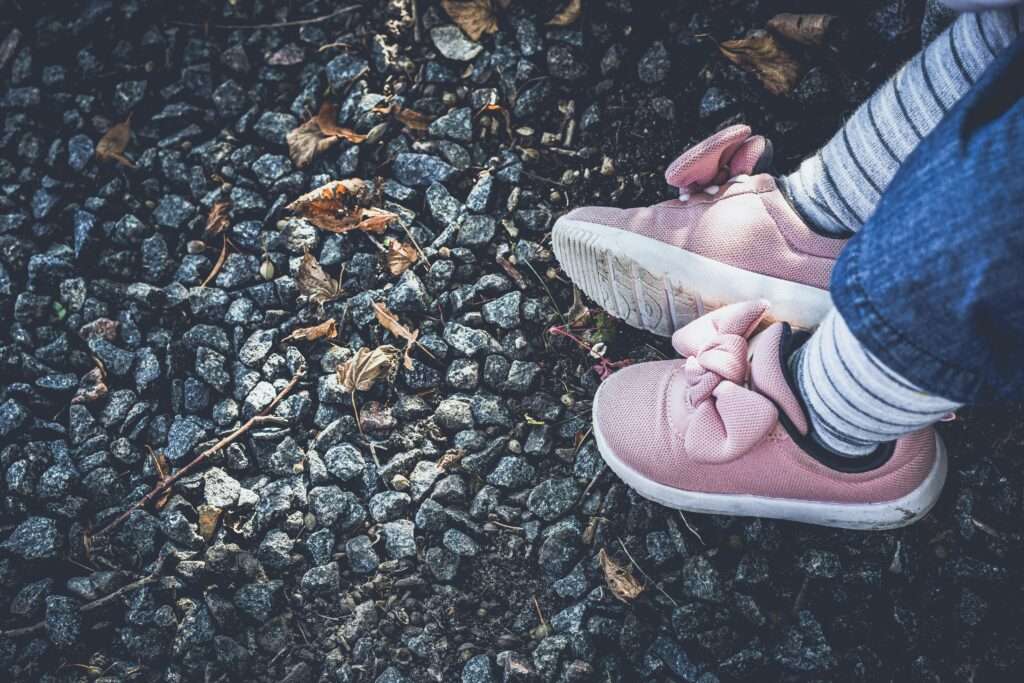Rise and recliner chairs and care chairs have several different backrest options depending on your needs. These different chair backrests offer just as much support as the seat itself and can really help you keep comfy over longer periods of time.
But which is the best one for you? And how are they different?
Jump straight to…
Waterfall Backrests for Recliner Chairs
Waterfall backrests are shaped as a sort of three-tier cushion. Each cushion goes across the backrest horizontally and provides support to different parts of the back.
The cushions are also very soft so that you can well and truly sink into them. Not only is this very comfortable, but it’s also a great way to provide bespoke support to all areas of your spine.
Waterfall backrests are one of the most popular options we provide because of how versatile they are. Wadding can be added or taken out of the cushions to provide customised comfort and support to suit you, and each cushion is height adjustable.
This backrest is particularly good for people with scoliosis and osteoporosis because it can easily be changed to provide support in the right areas.

Swaledale armchair with waterfall back
Waterfall Backrests with Lateral Supports
This backrest combines all the great features of the waterfall backrest with lateral cushions added in for extra positioning help. The waterfall lateral backrest is split into three section again to give you the most comfort possible.
But the bottom section benefits from some extra lateral cushions that sit just on the inside of the armrests. Just like a typical waterfall back, the laterals can have wadding added and taken out for more customised positioning options.
The waterfall lateral backrest cushions can also be switched around so that the extra side supports help hold your trunk stable. The laterals can be put in the middle section of the back to hold your posture further up your back.
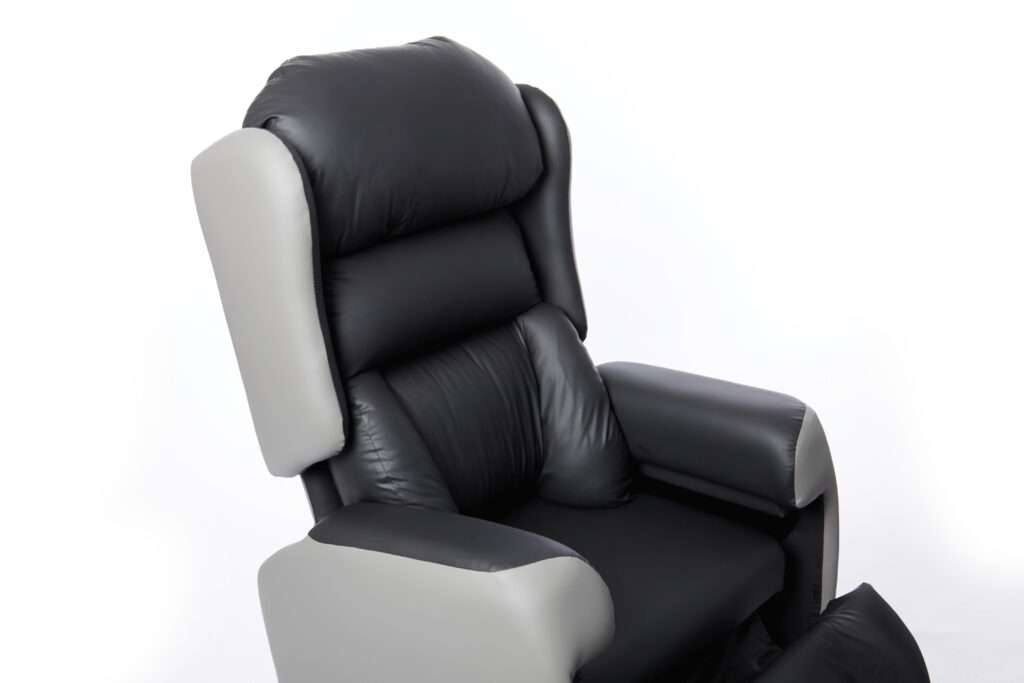
Waterfall lateral backrest – Lento Care Chair
Lateral Backrests for Postural Support
Lateral backrests (also known as butterfly backrests because they are shaped like butterflies) offer a bit more support up and down the sides of your back, which is great for people with trunk instability.
The lateral cushions stretch further up the backrest, from the hips right up to shoulder height. There’s then a horizontal cushion for the neck and head.
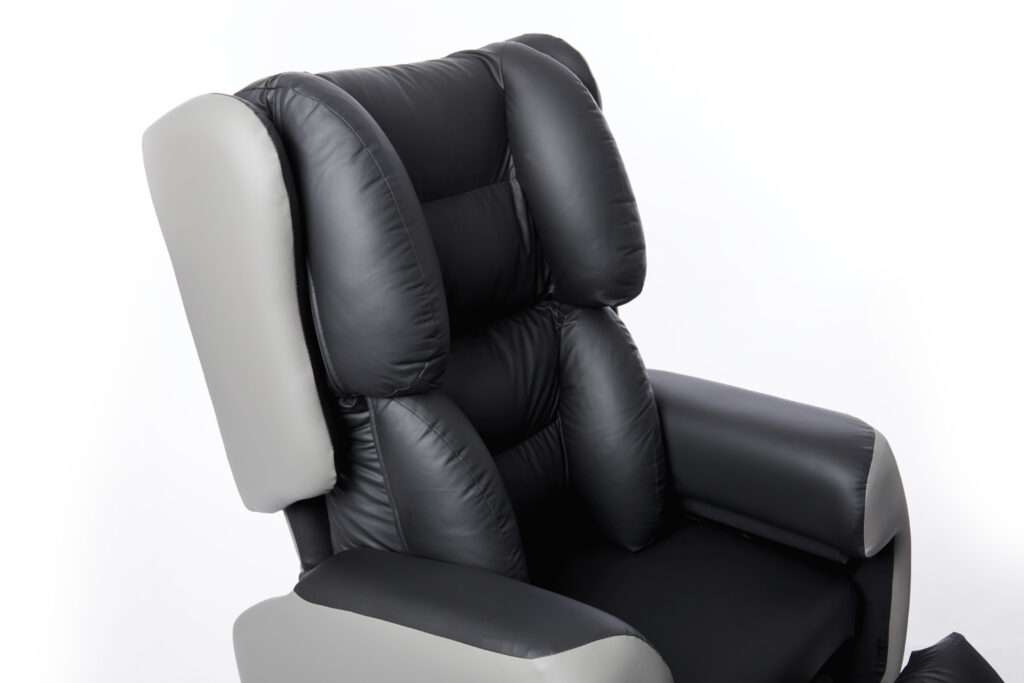
Lateral backrest – Lento Care Chair
The lateral cushions sit on either side of a traditional backrest cushion. The wings can be fitted with zips so that you can change the amount of stuffing depending on your comfort and needs.
Lateral backrests are usually better suited to people with more complex postural needs like scoliosis, kyphosis, and lordosis. This backrest will help to maintain a healthy midline position from the hips upwards, which is key for good posture.
If extra lateral cushions and supports are needed, you can use loose cushions or fixed metal supports.

Fixed metal lateral supports
Browse our Dales Range
Flat Backrests for Recliner Chairs
Flat backrests tend to be a bit firmer and more supportive. They are just as they sound; a flat back chair.
Firm backed chairs are probably what you would usually see on a typical classic fireside chair. Because the backrest is firm, it makes it easier to keep good posture and positioning when sat down.
It also has wings on either side of the backrest; these can be fitted with extra lateral supports if you need them.
There is a softer flat backrest if you need a little more comfort. The backrest provides good lumbar support, which in turn promotes good pelvic positioning.
Soft flat backrests tend to keep their shape a bit better than waterfall backs because they use foam and not wadding. These backrests can include wings if you need them.
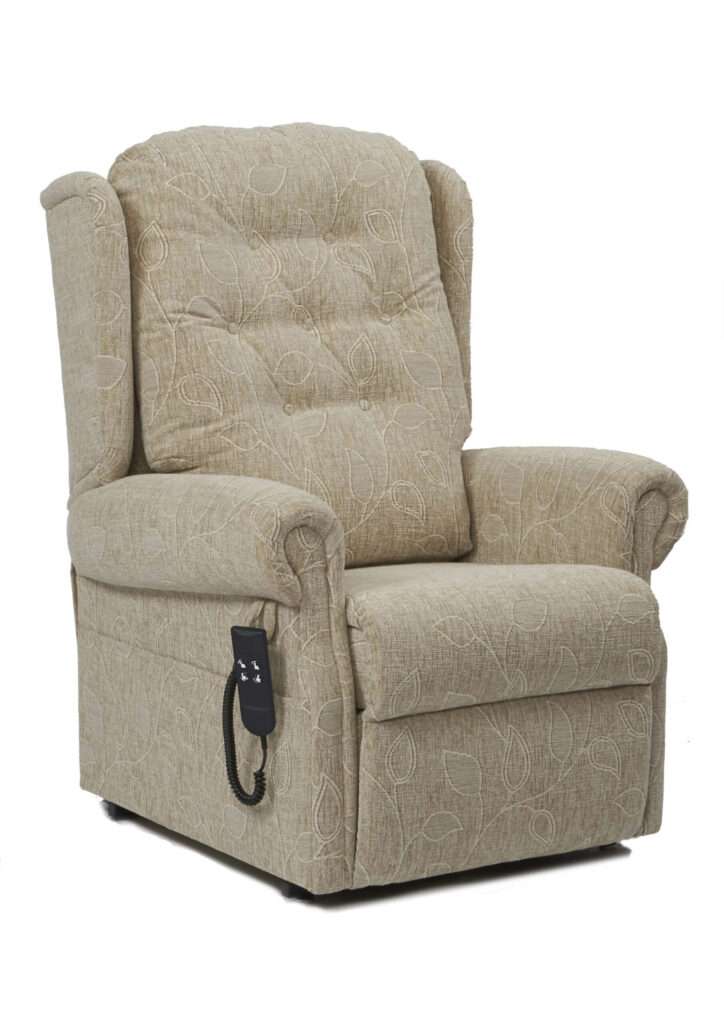
Soft backrest on Wharfedale armchair
With both the soft flat backrest and the firm flat backrest, a smaller cushion can run along the top to support the head and neck.
Chair Backrests for Kyphosis and Postural Needs
Finding a backrest for someone with kyphosis can be a little more difficult because the curvature is in the upper half of their spine. All the backrests listed above are great for supporting your back and lumbar region, but a more specialised backrest is needed for people with kyphosis.
T backrests are a great solution. T backs have two vertical cushions from the seat to shoulder level, and then a horizontal cushion going across the top of the backrest.
These cushions can all be readjusted and repositioned to suit your positioning and comfort. They’re all attached to the chair with Velcro, and stuffing can be added or taken out of them.
Summary
These are the most common backrest types that we supply with rise and recline chairs and care chairs. Each option has its benefits and can be customised to suit you.
But if you’re still not sure which backrest in best for you or you need something a little more specialised, then get in touch with our seating specialists! Vivid Care can provide custom, made-to-measure rise recliners and care chairs.
Find Your Ideal Patient Recliner
FAQs
What is a riser recliner chair?
A riser recliner chair is a specialised chair designed to assist individuals with mobility challenges. It allows the user to recline into a comfortable position and has an electric rise function to aid in standing up or sitting down.
Who can benefit from using a riser recliner chair?
Riser recliner chairs are beneficial for individuals with limited mobility due to age, physical disabilities, or health conditions such as arthritis, scoliosis, and back problems. They enhance comfort and independence for those who may struggle with conventional seating.
How does the lifting mechanism work?
The lifting mechanism operates through a handheld remote control, allowing the user to smoothly transition from a seated to a standing position or vice versa. The motorised mechanism gently assists the user, reducing strain on muscles and joints.
Are riser recliner chairs available in different sizes and styles?
Yes, riser recliner chairs come in various sizes and styles to accommodate different body types and home décors. Options include different fabrics, backrest styles, and mechanism types, with some models offering customisations like heat and massage functions.
Can I customise my riser recliner chair for added comfort?
Many manufacturers offer customisation options to tailor the chair to your specific needs, including choosing different fabrics, selecting specific features like heat and massage, and adjusting the size for a more personalized fit.
By understanding the various backrest options and features available, you can select a chair that provides the optimal combination of comfort, support, and functionality to meet your individual needs.

